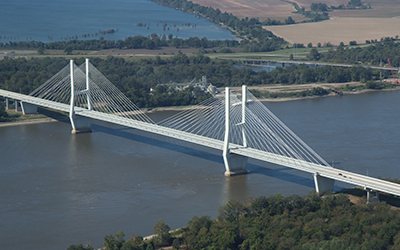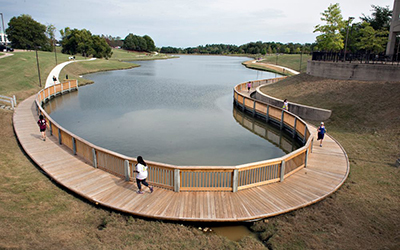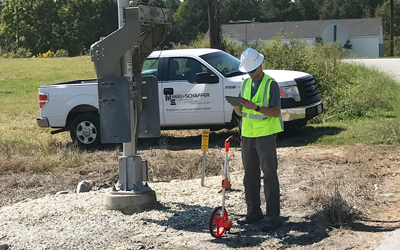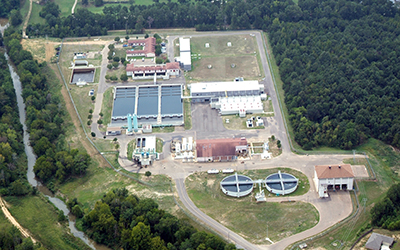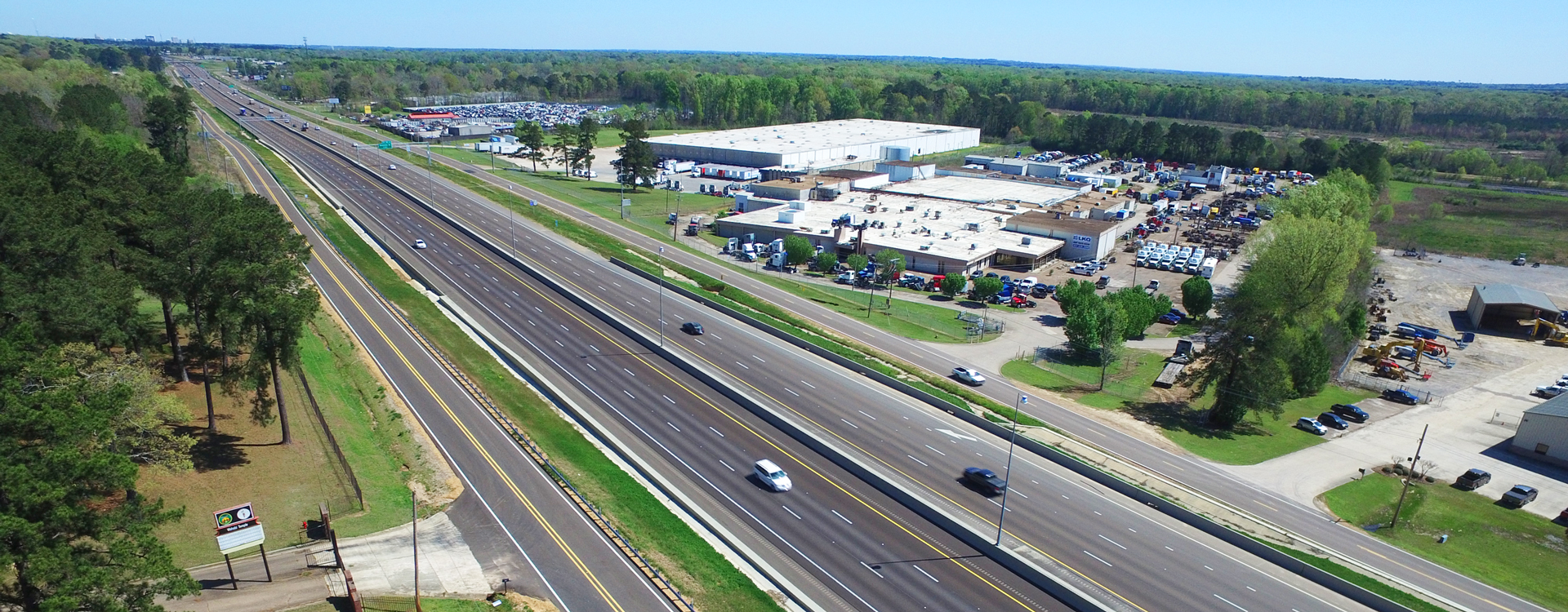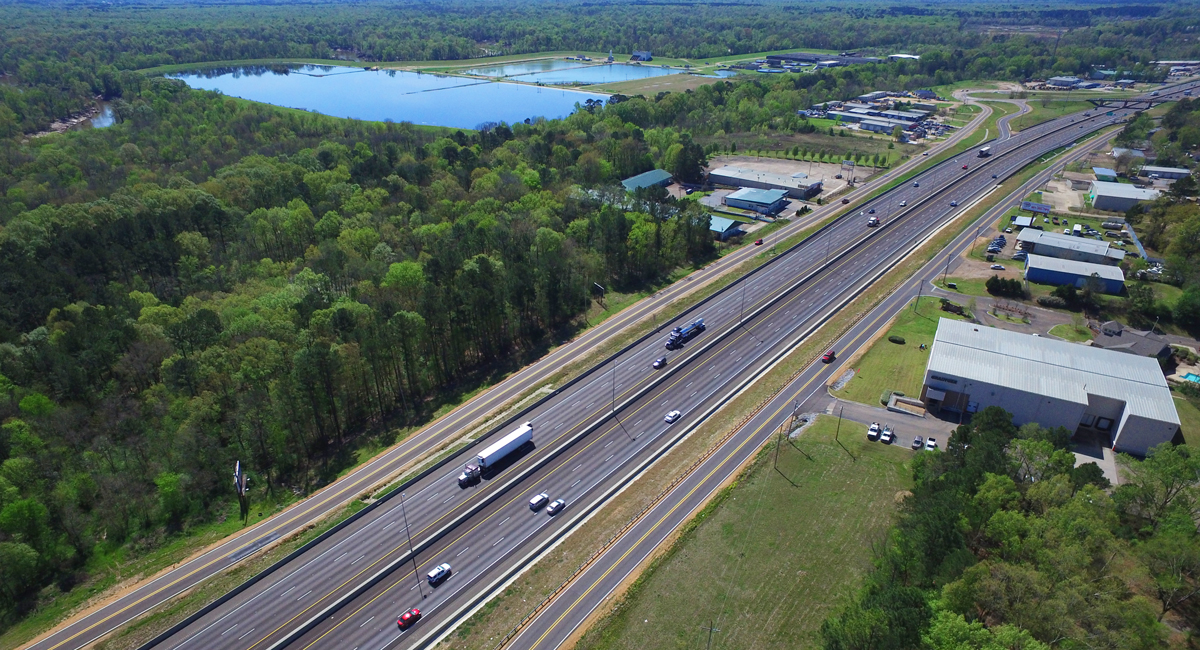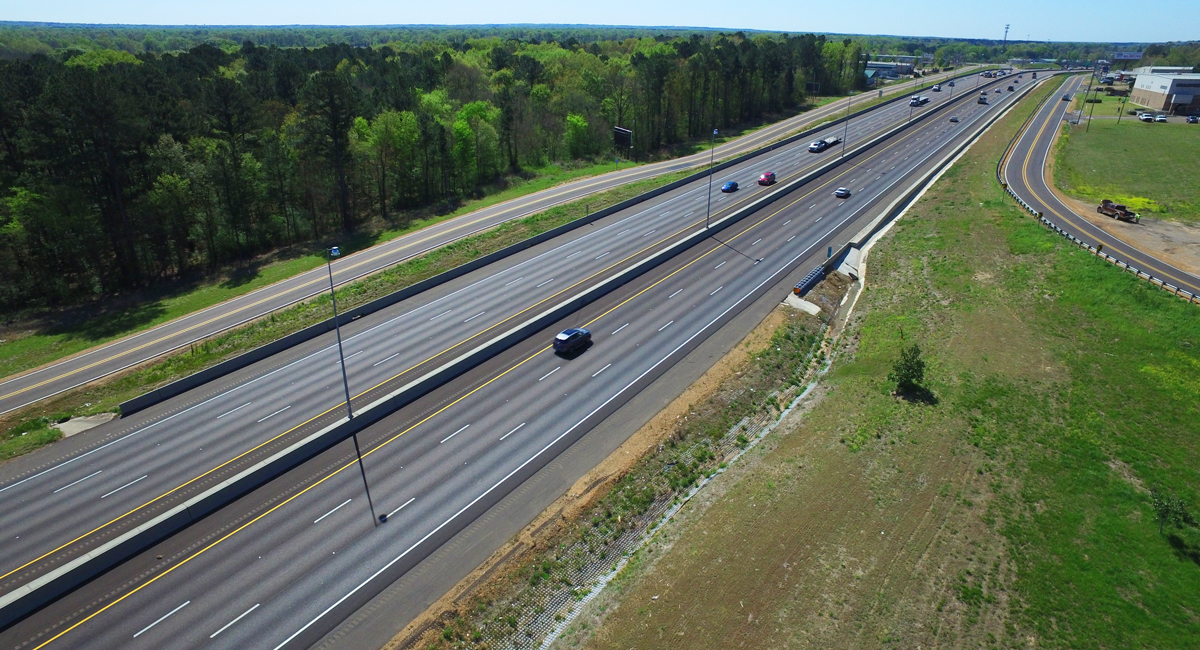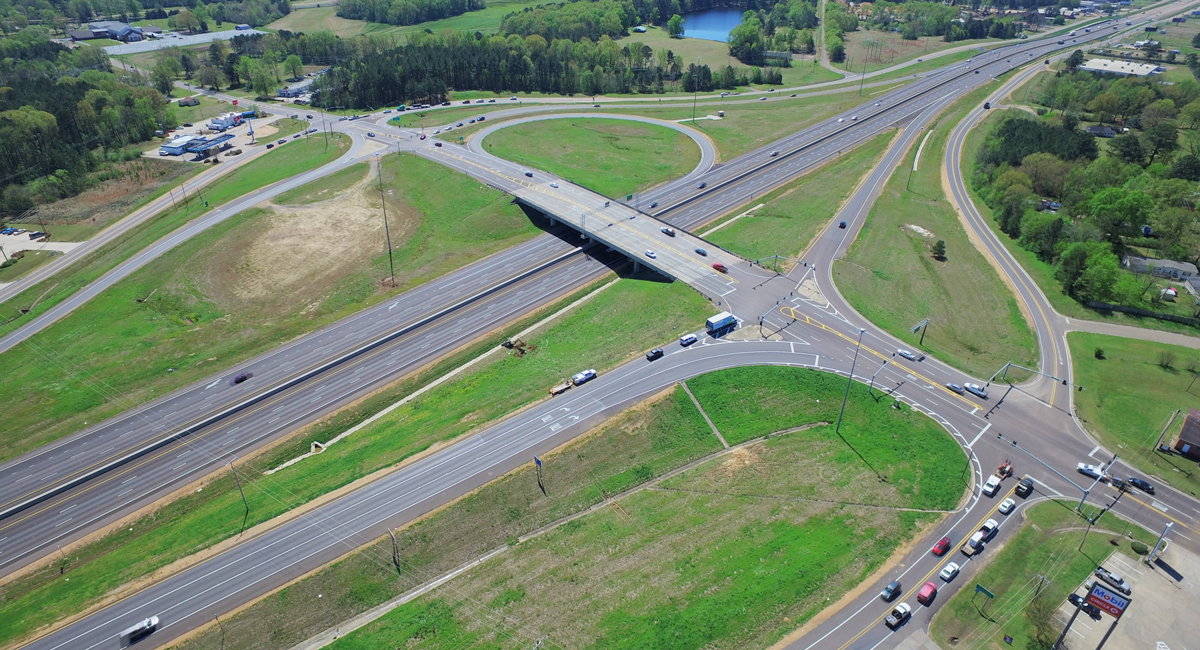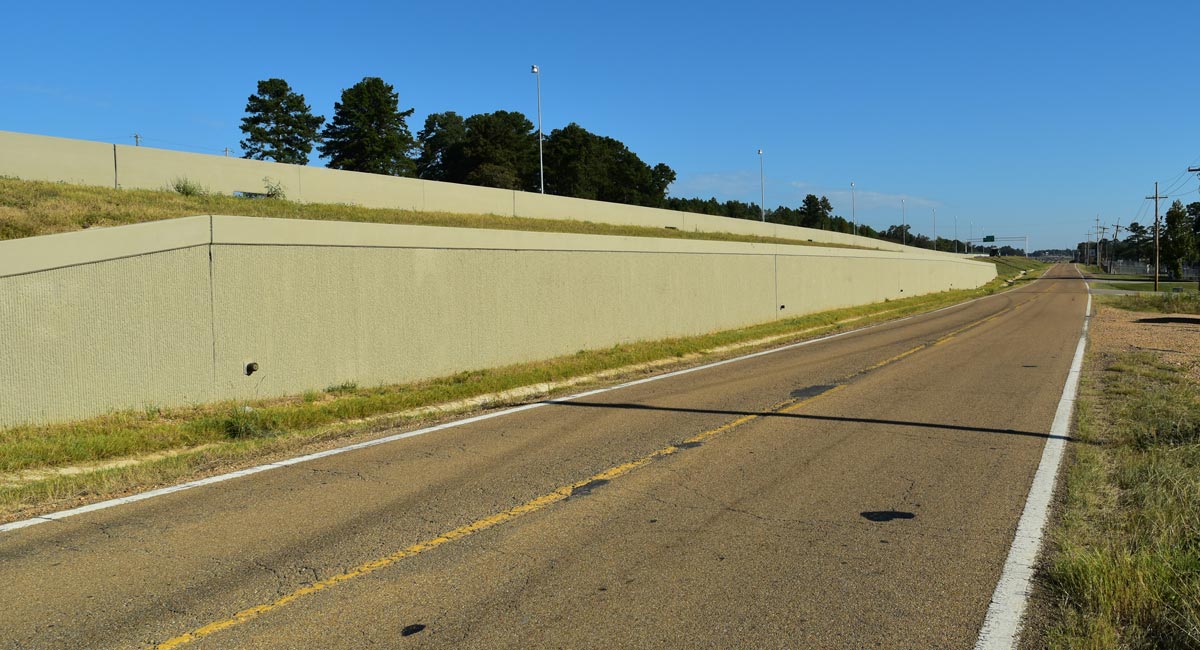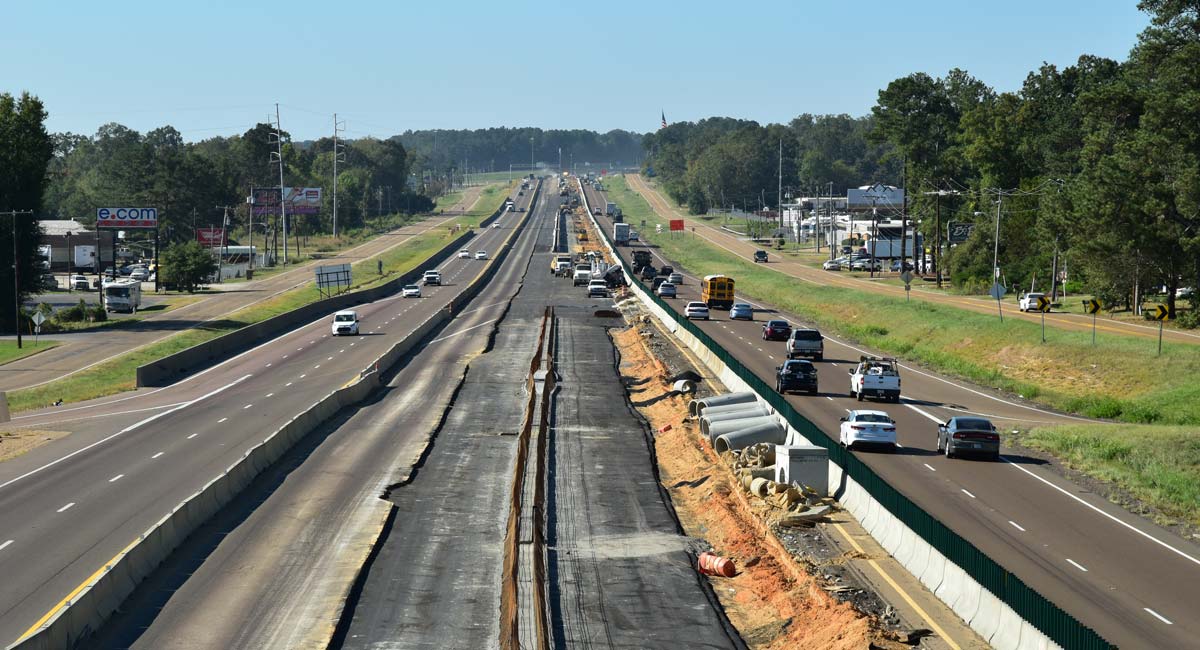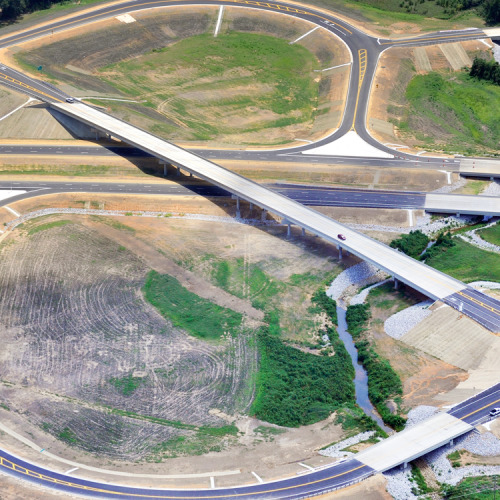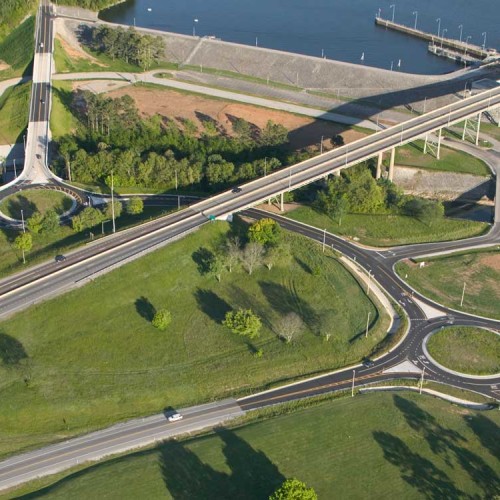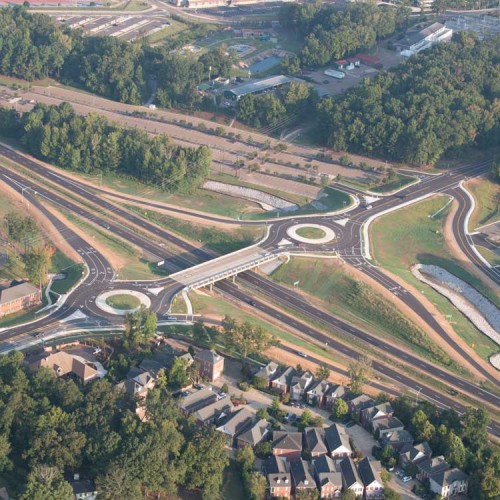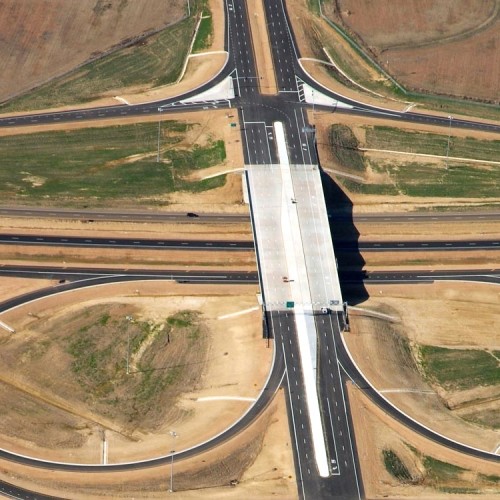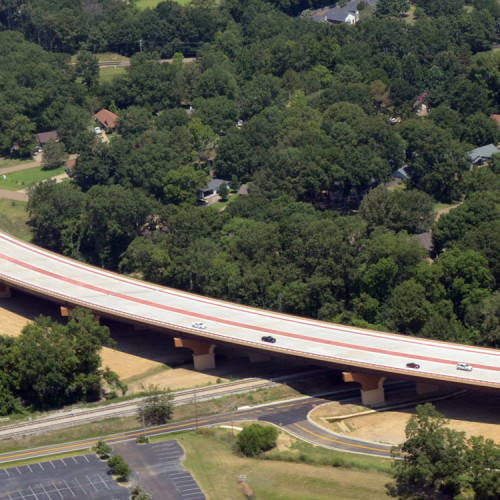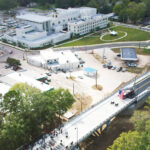JACKSON, MS
Neel-Schaffer gets call for expedited interstate design
Neel-Schaffer provided expedited engineering design services to the Mississippi Department of Transportation for a $180 million design-bid-build project to widen and reconstruct a seven-mile stretch of I-55 just south of downtown Jackson, MS. Construction of the overall project was completed in September 2018.
The project began in 2014, when MDOT awarded a contract for reconstruction of the portion of I-55 that stretches from the McDowell Road exit in Jackson to the City of Byram exit seven miles to the south.
In early 2015, however, MDOT and the active contractor mutually agreed to terminate the contract during the middle of the construction phase. At that point, all traffic was in a head-to-head operation in the southbound lanes. Three interchange ramps were also temporarily closed, which presented a major challenge to local traffic. These were designed only as temporary traffic configurations, and were not intended to be in place for an extended period.
Shortly after the contract was terminated, Neel-Schaffer was selected by MDOT to prepare plans for an interim project that would complete the active phase of construction. A field survey was made to determine which items of work contained in the initial project had not been constructed. The plans were quickly prepared for all remaining items of work needed to complete an interim phase, diverting traffic out of the head-to-head configuration.
Neel-Schaffer developed the plans in a manner that required the immediate re-opening of the ramps as a first order of business. The entire set of plans, including the field survey and numerous coordination meetings, were completed within a condensed five-week period that involved several Neel-Schaffer staff members working an extensive amount of overtime.
The extreme high priority of this work was recognized by all parties involved, and it illustrated the capabilities of Neel-Schaffer and MDOT working together with a common goal.
The interim project was let to contract and successfully completed within the required schedule, and it included the expedited reopening of the three closed interchange ramps.
Starting during the interim project’s advertisement and extending through its construction phase, Neel-Schaffer also prepared plans for the ultimate reconstruction. Once again, Neel-Schaffer examined the contents of the plans on the initial construction project and necessary improvements, and determined the plan requirements for the final construction project. Some of the major changes in project approach included modifications to the hydraulic structures. These changes were needed in order for each of the intermediate phases to be constructed and for all structures to hydraulically function as required as stand-alone segments. Major changes were required in order for proper drainage to occur throughout the construction phase. Once again, an extensive amount of coordination was required during plan development. The plans were completed within the required five-month period, which allowed MDOT to move quickly into the advertisement phase for the final construction project. This also allowed MDOT to move from the completion of the interim project into the construction of the final project without delay.
A total of 11 retaining walls were required to improve constructability of the project. Soldier pile walls were used at locations where widening of the roadway cut into the existing frontage road side slopes. These walls utilized closely spaced steel or concrete piles with a cast-in-place concrete stem. The piles reinforced the side slopes to prevent slides while weak roadway base soils were removed. One cast-in-place concrete T-wall on a pile-supported footing was used to prevent roadway fill from spilling over onto the frontage road. A soil nail wall was used to shorten the front slope of an existing bridge to accommodate widening of the roadway.
Under this redesign, Neel-Schaffer also handled lighting, traffic signals, and ITS elements. This was challenging because much of the conduit installation had begun under the old contract for lighting and ITS work. Neel-Schaffer had to investigate what was installed and still viable. Neel-Schaffer also had to make allowances in the plans for testing of installed /existing equipment. The ITS plans were redesigned to update them to new equipment and remove two of the four DMS signs installed under a separate contract. Although no traffic signal work had begun, Neel-Schaffer did a complete redesign of the signals, including new detection and phasing to utilize the latest Flashing Yellow Arrow signal heads.
Neel-Schaffer remained contract with MDOT to provide assistance with reviews of contractor submittals, and reviews of alternate concepts submitted by the contractor during the construction phases.

